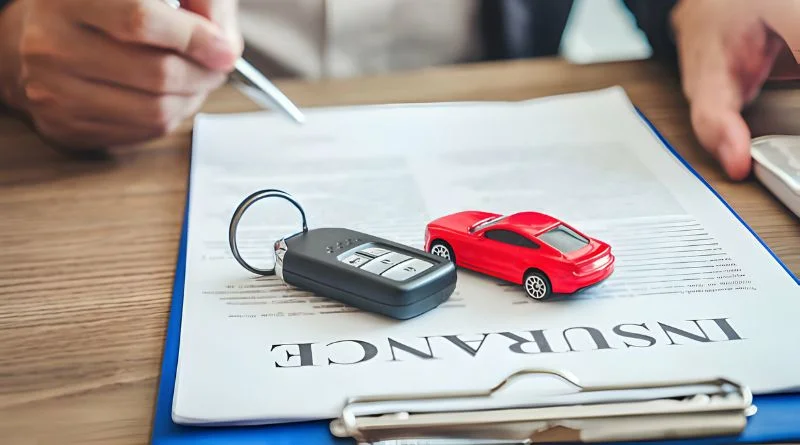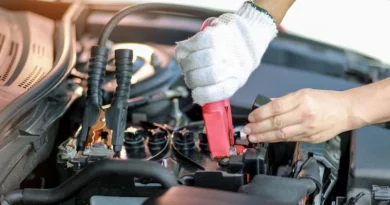What Is The Right Auto Insurance For You?
Selecting the right auto insurance is a pivotal decision that involves careful consideration of your specific circumstances and needs. With a myriad of coverage options available, it’s crucial to understand the nuances of each type to ensure you’re adequately protected on the road.
In this comprehensive guide, we’ll dive into each category of auto insurance, shedding light on the intricacies of liability insurance, collision coverage, comprehensive insurance, uninsured/underinsured motorist coverage, and personal injury protection (PIP). So what exactly is the right auto insurance for you? Let’s find out.
1. Liability Insurance
Liability insurance is the foundation of most auto insurance policies, encompassing both bodily injury and property damage coverage. In the unfortunate event that you are deemed at fault in an accident, liability insurance steps in to cover the medical expenses and property repair costs for the other party involved. It’s a legal requirement in most states, whether a car accident is your fault or not.
Understanding the two components of liability insurance is crucial. The first component is bodily injury liability, which covers medical expenses, rehabilitation, and legal fees for the injured party, while property damage liability covers the cost of repairing or replacing the damaged property.
The coverage limits can be customized based on your assets and potential liabilities, ensuring that you meet both legal requirements while also making sure this aligns with your personal needs.
2. Collision Coverage
While liability insurance covers damages to others, collision coverage focuses on your vehicle’s repair or replacement costs in the event of an accident, regardless of fault. If your vehicle is relatively new, holds significant value, or if you’re still making payments on a car loan, collision coverage becomes a crucial component of your insurance.
Consider the deductible on this plan, which is the amount you must pay out of pocket before the insurance kicks in. Adjusting your deductible can impact your premium, so finding the right balance based on your budget and the value of your vehicle is key for determining if this is right for you.
3. Comprehensive Insurance
Comprehensive insurance coverage expands coverage beyond collisions, protecting your vehicle from non-collision events such as theft, vandalism, natural disasters, or animal collisions. If you live in an area prone to weather-related incidents or high theft rates, comprehensive coverage becomes a valuable addition to your policy.
Evaluate the specific risks in your region and factor in the value of your vehicle when deciding on the coverage limits. While comprehensive insurance is not mandatory, it provides a safety net for unexpected events that cause huge financial strain.
4. Uninsured/Underinsured Motorist Coverage
Even with mandatory insurance requirements, not every driver on the road carries sufficient coverage. Uninsured/underinsured motorist coverage steps in to protect you in the event of an accident with a driver who lacks adequate insurance. This coverage can be particularly crucial in regions with a higher prevalence of uninsured drivers.
Uninsured motorist coverage typically includes both bodily injury and property damage components, ensuring that your medical expenses and vehicle repair costs are covered, even if the at-fault party is unable to provide compensation.
5. Personal Injury Protection (PIP) Coverage
Personal Injury Protection, or PIP, goes beyond traditional medical coverage by providing benefits for you and your passengers, regardless of fault. PIP covers medical expenses, rehabilitation, and, in some cases, lost wages.
This coverage is particularly valuable if you don’t have health insurance or live in a no-fault insurance state.
No-fault insurance states require PIP coverage, but even in other states, it can offer additional protection and peace of mind. The flexibility of PIP makes it a versatile option for those seeking comprehensive health coverage related to auto accidents.
6. Additional Coverages That Go Beyond Protection
Beyond the fundamental types of auto insurance, there are additional coverages that can further enhance your protection. These may include:
Rental Reimbursement: This coverage helps pay for a rental car while your vehicle is being repaired after a covered accident. It can be particularly beneficial if you rely heavily on your vehicle for daily activities.
Towing and Labor Coverage: In the event of a breakdown or roadside emergency, towing and labor coverage can cover the costs of towing your vehicle to a repair shop and any necessary labor charges.
Gap Insurance: If you’re financing or leasing your vehicle, gap insurance is worth considering. It covers the difference between what you owe on your car and its actual cash value, ensuring you’re not left with unexpected financial burdens in the event of a total loss.
Custom Parts and Equipment Coverage: If you’ve invested in aftermarket additions or modifications to your vehicle, this coverage ensures those enhancements are protected in the event of damage or theft.
Should You Conduct A Risk Assessment?
To determine the optimal auto insurance coverage for your situation, conduct a thorough risk assessment. Consider factors such as your driving habits, the local environment, and your personal financial situation. If you frequently drive in heavy traffic or areas with high accident rates, you may prioritize comprehensive coverage and uninsured motorist protection. However, if you’ve been in a serious accident, it should be in your interest to call a personal injury lawyer in Westminster, Colorado.
An attorney can ensure that your rights are protected and get compensation from the insurance company as soon as possible.
Evaluate your vehicle’s value, age, and your ability to cover repair or replacement costs out of pocket. Older vehicles with lower values may not require extensive coverage, allowing you to save on premiums. On the other hand, if your vehicle is a crucial part of your livelihood, investing in comprehensive and collision coverage becomes more pertinent.
Are There Discounts Usually Available?
Auto insurance providers often offer discounts that can significantly reduce your premiums. Common discounts include safe driver discounts, multi-policy discounts (for bundling auto and home insurance), and discounts for vehicles with safety features. Taking advantage of these opportunities can help you maximize cost-efficiency while still maintaining robust coverage.
Explore the possibilities of telematics programs, where your driving habits are monitored through technology. Safe driving practices can lead to discounts, offering a tangible incentive for responsible behavior on the road.
How To Adapt To Life Changes For Insurance Policies
As your life evolves, so do your insurance needs. Periodically review your auto insurance policy to ensure it aligns with your current situation. Life events such as marriage, the birth of a child, or a change in employment can impact your coverage requirements. Adjust your policy accordingly to guarantee that you have adequate protection in every stage of life.
Make The Right Informed Decisions for Lasting Protection
The process of selecting the best auto insurance for your situation is an ongoing journey that involves a combination of understanding, assessment, and adaptation.
By delving into the nuances of each coverage type, conducting a comprehensive risk assessment, and taking advantage of available discounts, you can tailor your policy to your unique needs. Regularly reassessing your coverage ensures that you stay protected against unforeseen circumstances and changing life situations, providing peace of mind and financial security on every journey.




